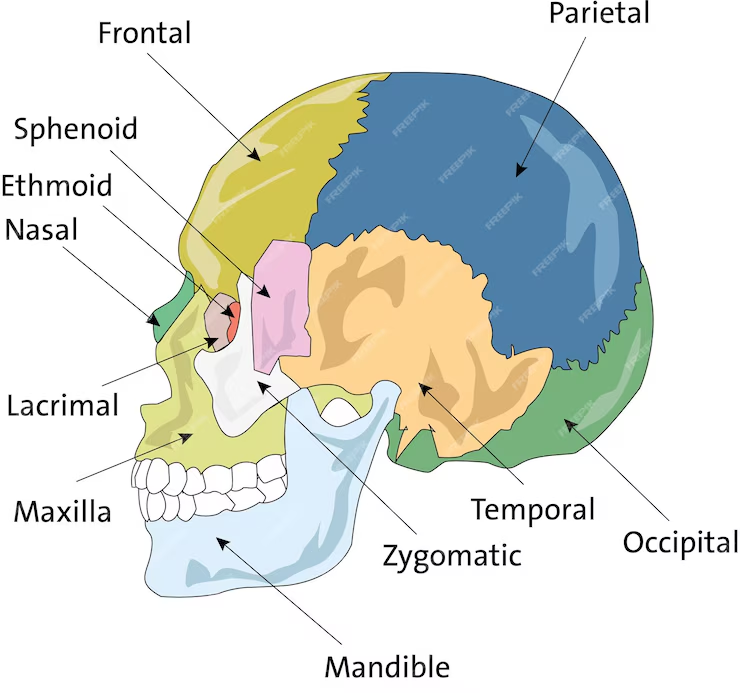Introduction
When diving into the world of anatomy and biology, you might stumble upon the term “rostrální.” This fascinating term plays a crucial role in understanding the orientation and positioning of various structures in both humans and animals. But what exactly does it mean, and why is it important to grasp this concept? Let’s explore the depths of rostrální and its significance in multiple fields of study.
Etymology and Definition
Origin of the Term “Rostrální”
The word “rostrální” is derived from the Latin term “rostrum,” which means “beak” or “snout.” This origin gives a hint about its usage, as it often refers to something related to the front or the beak-like part of an organism. Understanding this etymology can help clarify its application in various scientific contexts.
Definition and Usage
Rostrální is an anatomical term used to describe a position toward the front end of an organism, typically towards the nose or mouth. In human anatomy, it often refers to structures closer to the face or the front part of the brain. This directional term is crucial for accurately describing the locations and orientations of different body parts, making communication in medical and biological sciences more precise.
Anatomical Significance
Rostrální in Human Anatomy
In human anatomy, rostrální is commonly used to describe positions relative to the face and head. For example, the frontal lobe of the brain is located rostrally to the occipital lobe. This terminology helps medical professionals accurately discuss and diagnose conditions related to different parts of the body.
Rostrální in Animal Anatomy
Animals, especially those with distinct snouts or beak-like structures, also utilize the term rostrální. It helps in describing the position of various anatomical features relative to the animal’s head. For instance, in birds, the beak is a prominent rostral feature, while in quadrupeds, it refers to the nose or snout region.
Rostrální in Neuroanatomy
Role in Brain Structure
Neuroanatomy heavily relies on directional terms like rostrální to describe the complex structures of the brain. The brain’s anatomy is intricate, and understanding the rostral position is essential for identifying different brain regions and their functions.
Importance in Neurological Studies
In neurological studies, the term rostrální is crucial for discussing brain development, functions, and abnormalities. It aids researchers and clinicians in pinpointing specific areas affected by neurological disorders, thus facilitating accurate diagnosis and treatment planning.
Rostrální vs Caudal
Understanding Anatomical Directions
Rostrální is often contrasted with caudal, another directional term referring to the tail or posterior end of an organism. These terms help create a clear, standardized way to describe anatomical positions and orientations.
Key Differences and Similarities
While rostrální indicates a position toward the front, caudal indicates a position toward the back or tail. Understanding these terms is essential for anyone studying anatomy, as they provide a common language for describing the locations of various structures within the body.
If you want to read more, visit our blog page. We have more topics!
Rostrální in Evolutionary Biology
Evolutionary Perspective
From an evolutionary standpoint, the concept of rostráln’í helps in comparing anatomical features across different species. It provides insights into how certain traits have evolved and adapted over time, aiding in the study of phylogeny and evolutionary biology.
Comparative Anatomy Across Species
Comparative anatomy utilizes terms like ros’trální to describe and compare similar structures in different species. This comparison helps scientists understand the functional and evolutionary significance of these anatomical features.
Clinical Relevance
Rostrální in Medical Diagnosis
In the clinical setting, understanding ros’trální positions is vital for diagnosing various medical conditions. For instance, identifying the rostral part of the brain affected by a stroke can help in tailoring appropriate treatment strategies.
Case Studies and Examples
Numerous case studies highlight the importance of the rostrální concept in medical diagnosis. For example, in cases of traumatic brain injury, determining the rostral extent of the damage can significantly impact the prognosis and rehabilitation approach.
Rostrální in Veterinary Medicine
Importance in Animal Health
Veterinarians use the term rostrální to accurately describe the location of injuries or abnormalities in animals. This precise communication is crucial for effective treatment and care.
Diagnostic Techniques
Veterinary diagnostic techniques often involve imaging and examination of rostral features, especially in animals with pronounced snouts or beaks. These techniques help in early detection and treatment of various conditions.
Rostrální and Surgical Applications
Importance in Surgical Procedures
In surgery, understanding the rostrální position is essential for accurate navigation and successful outcomes. Surgeons rely on this knowledge to precisely locate and operate on affected areas.
Advances in Rostrální Surgery
Advancements in surgical techniques have improved the precision of rostrální surgeries. Minimally invasive procedures and advanced imaging technologies have made it easier to target rostral areas with high accuracy.
Imaging Techniques
MRI and Rostrální Imaging
Magnetic Resonance Imaging (MRI) is a powerful tool for visualizing rostral structures in the body. It provides detailed images that help in diagnosing and monitoring various conditions.
Other Diagnostic Tools
In addition to MRI, other diagnostic tools like CT scans and ultrasounds also play a role in examining rostral features. These tools provide complementary information that enhances the overall understanding of the patient’s condition.
Rostrální in Developmental Biology
Role in Embryonic Development
During embryonic development, rostral structures form early and play a critical role in the overall development of the organism. Studying these early formations helps researchers understand developmental processes and congenital anomalies.
Research Findings
Recent research has shed light on the significance of ros’trální features in developmental biology. Studies have revealed how specific genes and molecular pathways influence the development of rostral structures.
Educational Importance
Teaching Rostrální in Medical Schools
Medical schools emphasize the importance of understanding ros’trální in their curricula. This foundational knowledge is crucial for future healthcare professionals in accurately diagnosing and treating patients.
Learning Resources
Various learning resources, including textbooks, online courses, and interactive tools, are available to help students grasp the concept of ros’trální. These resources provide comprehensive information and practical applications.
Technological Advancements
Innovations in Rostrální Research
Technological advancements have revolutionized ros’trální research. Innovations such as 3D imaging and computer modeling have provided deeper insights into the structure and function of rostral features.
Future Prospects
The future of ros’trální research holds exciting possibilities. Ongoing studies and technological developments promise to uncover new information and applications in medical and biological sciences.’
Common Misconceptions
Myths and Facts
Despite its importance, several misconceptions surround the term ros’trální. Clearing up these myths is essential for a proper understanding of anatomical and medical terminology.
Clarifying Common Errors
One common error is confusing ros’trální with similar-sounding terms or misapplying it in anatomical descriptions. Clarifying these errors helps in maintaining accurate and effective communication in scientific contexts.
Conclusion
Understanding rostrální is fundamental for anyone involved in the fields of anatomy, medicine, and biology. This term provides a crucial point of reference for describing the location and orientation of various structures within the body. As research and technology continue to advance, the importance of ros’trální in scientific and clinical settings will only grow. Embracing this knowledge enhances our ability to diagnose, treat, and study a wide range of conditions, ultimately improving outcomes in both human and veterinary medicine.
FAQs
What does rostrální mean?
Rostrální refers to a position toward the front end of an organism, typically near the nose or mouth.
How is rostrální used in medical terminology?
In medical terminology, rostrální is used to describe the location of anatomical structures relative to the face or front part of the brain.
What is the difference between rostrální and caudal?
Rostrální refers to the front end, while caudal refers to the tail or back end of an organism.
Why is understanding rostrální important in neuroanatomy?
Understanding ros’trální is crucial in neuroanatomy for accurately describing brain structures and their functions.
Can rostrální be used in veterinary practices?
Yes, veterinarians use the term rostrální to describe the location of structures and conditions in animals, aiding in accurate diagnosis and treatment.







